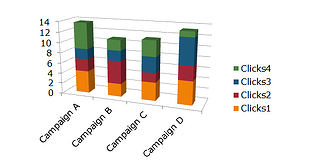The time may come when all of the corporate assets you want to upload to your marketing portal are digital, not tangible.
Instead of a portal that houses items like trade show materials; training manuals; promotional items; or flyers and brochures to be printed, you need an all-digital catalog of items to educate, inform and train whoever has access to it – a Marketing Asset Management system.
Maybe you’re a software manufacturer with a large menu of products on the market. Retailers, reps and certified trainers all over the world sell your software or teach others how to use it. Upgrades and brand new versions come to market frequently, so there’s a ton of new informational content you need to get into the hands of these partners.
Perhaps you’re a medical device manufacturer with a wide network of partners who purchase and use your products. You’ve developed a series of videos to train each type of user or reseller, as well as a large body of instructional content for them. These may be PDFs, custom templates, or even your monthly newsletter filled with product updates, marketing suggestions, and breaking news.
In both cases, your Marketing Asset Management system has a wide audience of people who need to access, view, and/or download digital content for their own training or marketing purposes.
Creating such a digital library isn’t what’s challenging, but tracking behavior activity is. When your marketing portal comprises jobs to be printed or other tangible items to be picked, packed, and shipped, their usage is fairly easy to track.
It’s a whole different ballgame when you have a digital library. The important information is the behavior activity: who’s accessing which item and when, how often they're viewing a particular asset, from which platform, and what they’re downloading.
This data can be captured by Google Analytics, which should be integrated with your  marketing portal. Work with your portal provider to refine the exact type of reporting you need, so that you can track the activity that’s meaningful to you, and to make sure the reports generated are easy to understand.
marketing portal. Work with your portal provider to refine the exact type of reporting you need, so that you can track the activity that’s meaningful to you, and to make sure the reports generated are easy to understand.
The value of Google Analytics is huge. You’ll have the ability to track the activity of everyone who accesses your portal, down to which items they viewed or downloaded, how much time each person spends on a particular item on the portal, and how many times they accessed it.
You can even run the names of the people who access your digital library against revenue reports – or tie a report into a particular marketing campaign to see how effective it is.
Companies aren’t just filling carts anymore. They want to know who’s on their portal poking around, what they’re looking at, and what they’re not.
This type of activity tracking is deeper than monitoring people placing orders for physical products. It lets you track clicks, not impressions. By having a portal that incorporates Google Analytics, you’ll be able to ask and answer this key question:
Can we translate download activity to success in the field?
So when the day comes that you’re considering a completely digital asset catalog but wonder how you’ll track behavior activity, ask for a portal solution that uses web analytic software like Google Analytics.
It’s the perfect answer for lean marketing departments who haven’t the luxury of working side-by-side with their own data analysts.
It will put the focus on behavior activity, not the shopping cart.

